The Difference Between a Masai Mara and a Serengeti Safari
When is the best time to go for the Great Migration?
Kenya's Masai Mara and Tanzania's Serengeti are two of Africa's most famous safari destinations, essentially one ecosystem separated by an international boundary. Although they are connected, they have different seasonal patterns that affect wildlife movement. Depending on what you want to see and experience, you may visit them at different times of the year since there is always an abundance of wildlife to enjoy outside of the migration season.
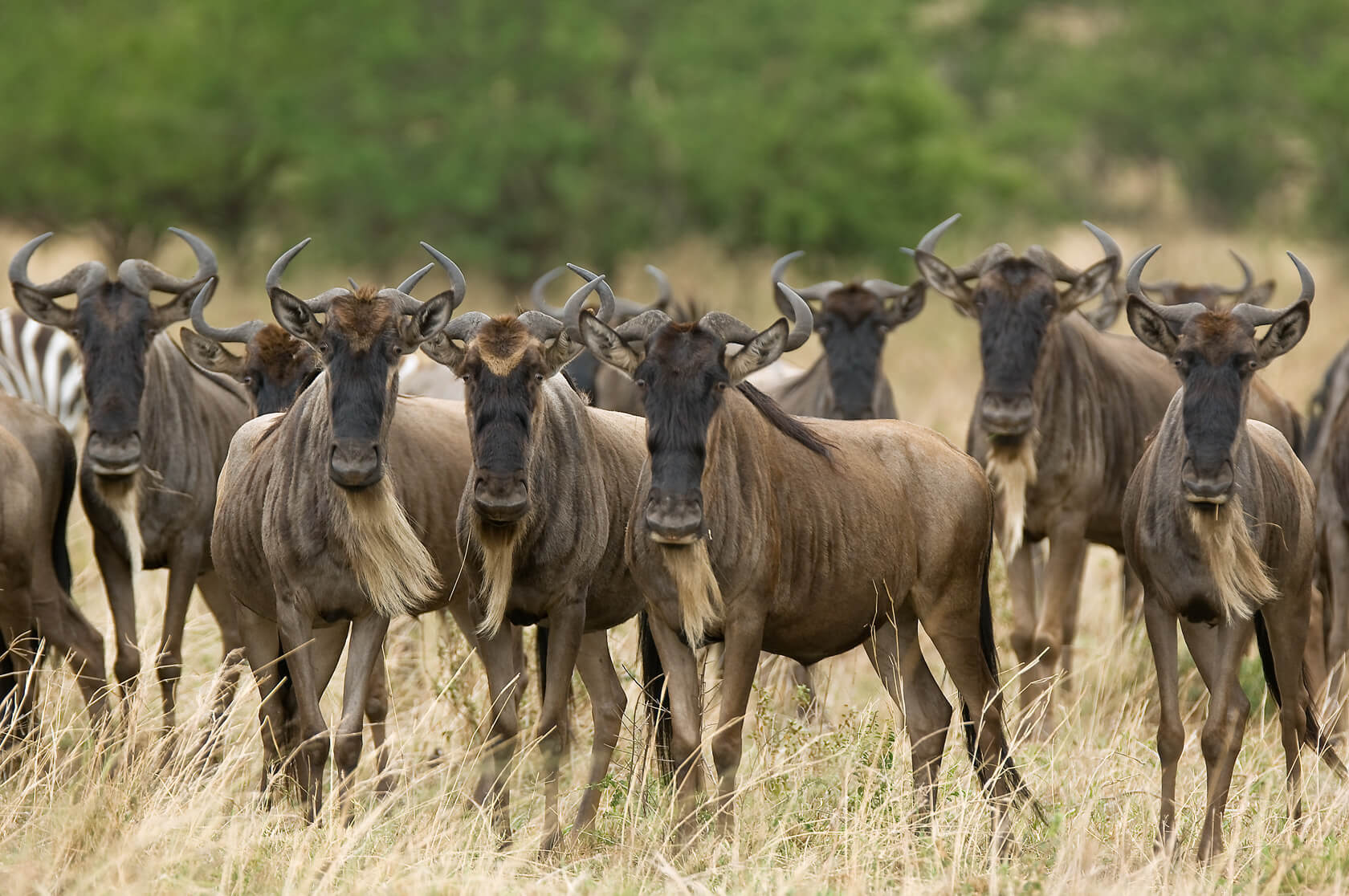
Wildebeest grazing as they move along their migratory route
Masai Mara: Travel Tips and Advice
If you choose the Masai Mara and want to experience the Great Migration, when millions of wildebeest, zebra, and antelope move across the plains in search of fresh grass and water, the best time to go is from June to October. During these dry months, the herds cross the Talek and Mara Rivers between the Serengeti and the Masai Mara, facing crocodile, lion, and other predator. This season is also great for seeing the big cats and hunting their prey following the migration. Because this is the high season, safari vehicles are more prevalent. At 1,510 km² (583 m²), and depending on the locations of your chosen camps, you can move from one to another by road to enjoy a wider variety of experiences since the reserve and adjoining private conservancies comprise a slightly smaller area than the Serengeti. However, convenient light aircraft flights are readily available if needed.
How to Explore the Serengeti
Tanzania's Serengeti, covering 14,750 km² (5,700 m²), is somewhat different due to its size and location. The best time to visit the Serengeti National Park to see the Great Migration depends on which part of the park you visit and what you want to see. Generally, the dry season, similar to the Masai Mara, from June to October, is the best time for wildlife viewing, as the animals gather around water sources and the vegetation is less dense. June to September is the best period to witness the Mara River crossings in the western and northern Serengeti. Due to the size of the Serengeti, flights are often required to offer a better safari adventure, allowing you to cover more of the region.
General Wildlife Viewing
Both parks are part of the same ecosystem and share an unfenced border, allowing animals to move freely between them. However, the Serengeti is much more expansive and varied regarding habitats. At the same time, the Masai Mara is smaller and more concentrated with wildlife.
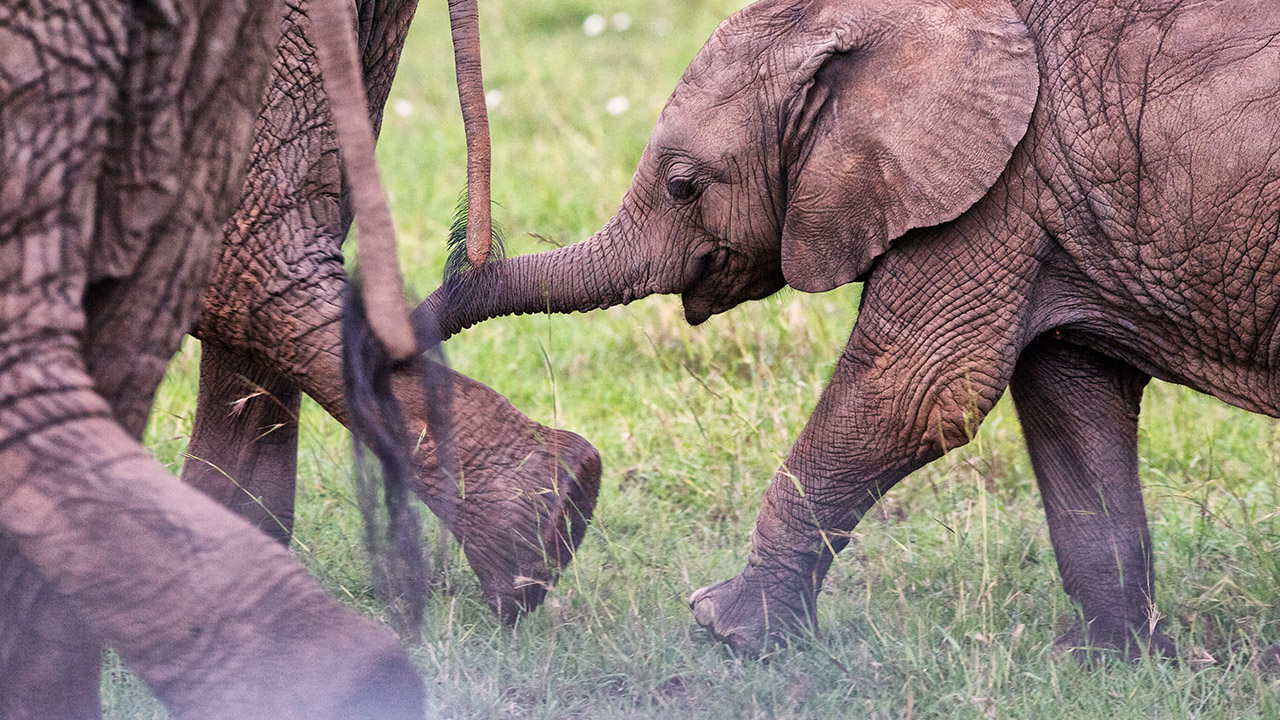
Elephant sighting in the Masai Mara
The Great Migration: When and How
One of the main attractions of a Masai Mara or Serengeti safari is the Great Migration, the annual movement of millions of wildebeest, zebra, and gazelle across the vast savannah plains in search of fresh grass and water. The migration follows a circular route that spans both parks. Still, the timing and location of the migration varies depending on the season and the prevailing rainfall patterns. Generally, the migration is in the Serengeti longer than in the Masai Mara, from January to July and October to December. The best time to see the migration in the Masai Mara is from around July to September, when the wildebeests cross the Mara River in a dramatic spectacle. Here, they must dodge massive hungry crocodiles waiting for an easy meal. During the rainy months of March, April, November and December, driving can be more challenging, so your best chance to witness the spectacle of the great migration is between August and October.
Spotting the Big 5: Tips
Both parks are home to the Big 5: lion, leopard, elephant, rhino, and buffaloe. However, a Serengeti safari has a better chance of spotting them, especially the elusive leopards and the endangered rhinos. The Masai Mara has a higher density of lions and cheetahs and is known for its large population of hyenas. Both parks have diverse other wildlife, such as giraffe, hippo, crocodile, antelope, and warthog. The Serengeti has more bird species than the Masai Mara, with over 500 recorded species.
Wildebeest Calving: Nature’s Drama
The annual wildebeest birthing season, a spectacular natural phenomenon in Tanzania’s Southern Serengeti, is not to be missed either. Between January and March, hundreds of thousands of wildebeest give birth to their calves in a synchronised event that attracts many predators and visitors. Wildebeests select this area because of the short grasses that provide fresh grazing and good visibility. The birthing season is a fantastic experience because it showcases the cycle of life and death in the wild. One can witness the miracle of newborn calves taking their first steps and the drama of predator-prey interactions. The wildebeest birthing season is a unique and unforgettable spectacle that reveals the beauty and harshness of nature.
In conclusion, the Masai Mara and the Serengeti are excellent safari destinations offering different wildlife viewing opportunities. The best way to experience both reserves is to visit them at different times of the year or, as often recommended, combine them in one all-embracing safari trip, which can be easily arranged. Either way, you will be captivated by the beauty, serenity, variety, and abundance of nature of these magnificent wildlife sanctuaries.
Are there any landscape differences?
The Masai Mara and Serengeti are part of the same ecosystem. Still, they have distinct and diverse landscapes that offer different experiences and attractions for adventurers. By visiting both, you can witness the diversity and wonder of Africa’s magnificent wildlife.
Masai Mara: Wildlife and Scenery
Kenya’s Masai Mara has an area of 1,510 km² (583 m²). It is named after the Maasai people, who have lived in harmony with nature for centuries. The Masai Mara is known for its iconic grasslands dotted with acacia trees, termite mounds, riverine forests and occasional rocky outcrops. These plains are the stage for the annual Great Migration, when millions of wildebeest, zebra, and gazelle cross the Mara River in search of fresh pastures. The grasslands also have predators such as lion, cheetah, hyena, leopard, and herbivores like elephant, giraffe, rhino, and buffalo. The Masai Mara also has other types of terrain, such as the Ngama Hills, favoured by rhino, the Oloololo Escarpment, which offers stunning views, and the riverine forests, which provide shade and water for many animals and plants.
Serengeti Safari: Savannahs and Beyond
Lying south of the border, Tanzania’s Serengeti covers an area of 14,750 km² (5,700 m²). It is derived from the Maasai word "siringet", which means "the place where the land runs on forever". The Serengeti is famous for its vast savannahs, divided into short-grass, intermediate-grass, and long-grass plains. The short-grass plains are the most productive and fertile, where the migration herd spends the wet season. The intermediate-grass plains are where the herd moves during the dry season and are rich in varied wildlife. The long-grass plains are the most remote and rugged, where the herd faces the most challenges and dangers. The Serengeti also has other landscapes, such as the woodlands, which are found in the hilly north; the marshes, which are wetlands that attract many birds and reptiles; and the kopjes, which are rocky formations that rise above the plains and serve as lookout points for predators and prey.
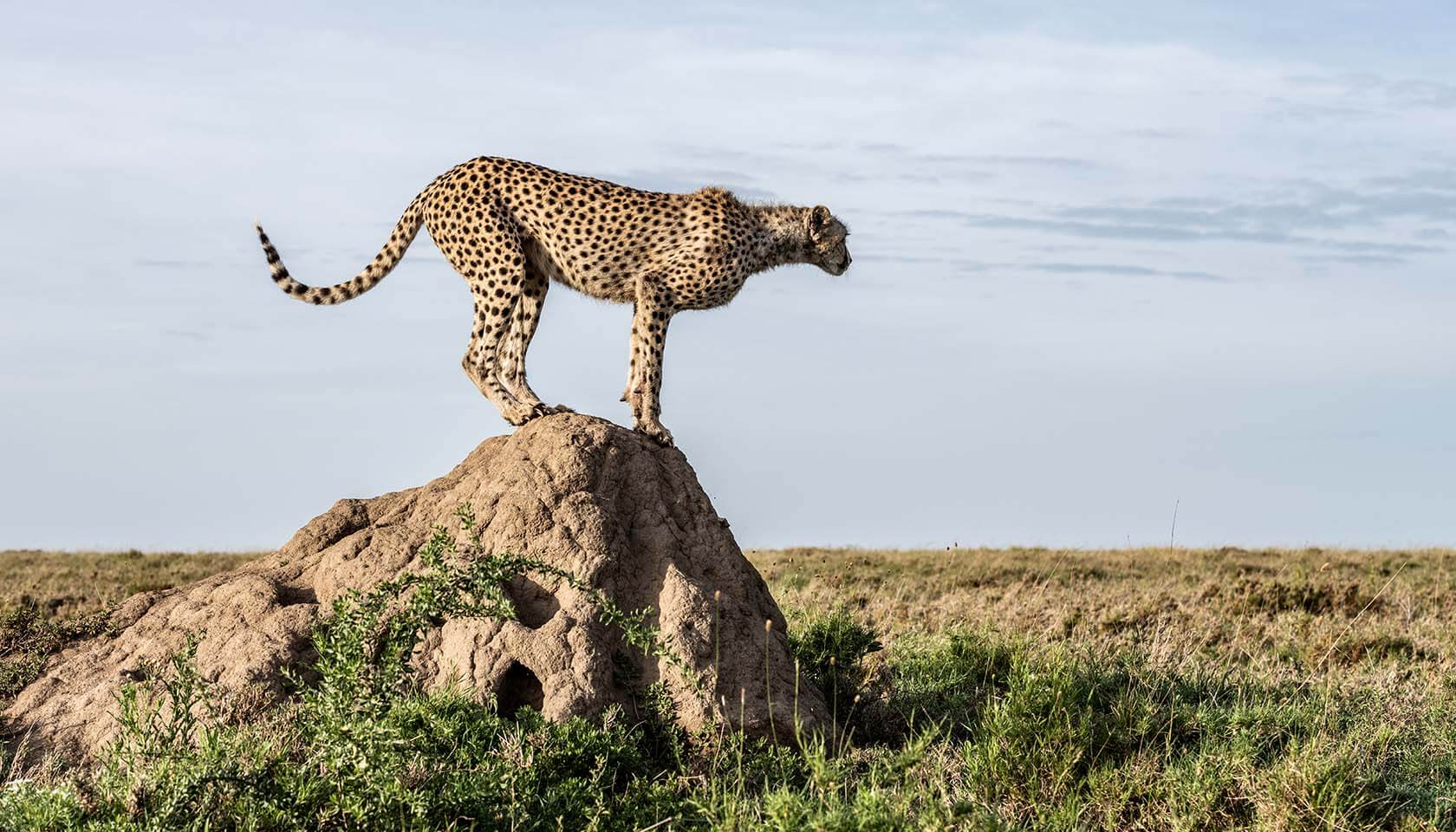
A cheetah on a kopje in the Serengeti
Safari Activities
The Masai Mara and the Serengeti reserves offer a fantastic variety of safaris, activities, and experiences guaranteed to thrill and amaze you. The joy of a safari in this region is that each reserve offers a spectacular experience and, when combined, is an off-the-charts adventure. The Great Migration can be witnessed in both areas.
Masai Mara: Culture and Wildlife
The Masai Mara is home to the Maasai people and their rich culture. You can witness the stunning variety and volume of wildlife in several ways, including game drives, hot air balloon rides and walking safaris. Authentic and educational cultural visits to local communities are arranged and open up a new vista into the lives of these warm and semi-nomadic people. Along with cheetah, elephant, and giraffe, the area has one of Africa's highest concentrations of lion. There are numerous private conservancies adjoining the northern areas of the Masai Mara. Within these private concessions, walking adventures, night safaris, hot-air balloon safaris and exciting nights out fly camping under the stars can be enjoyed.
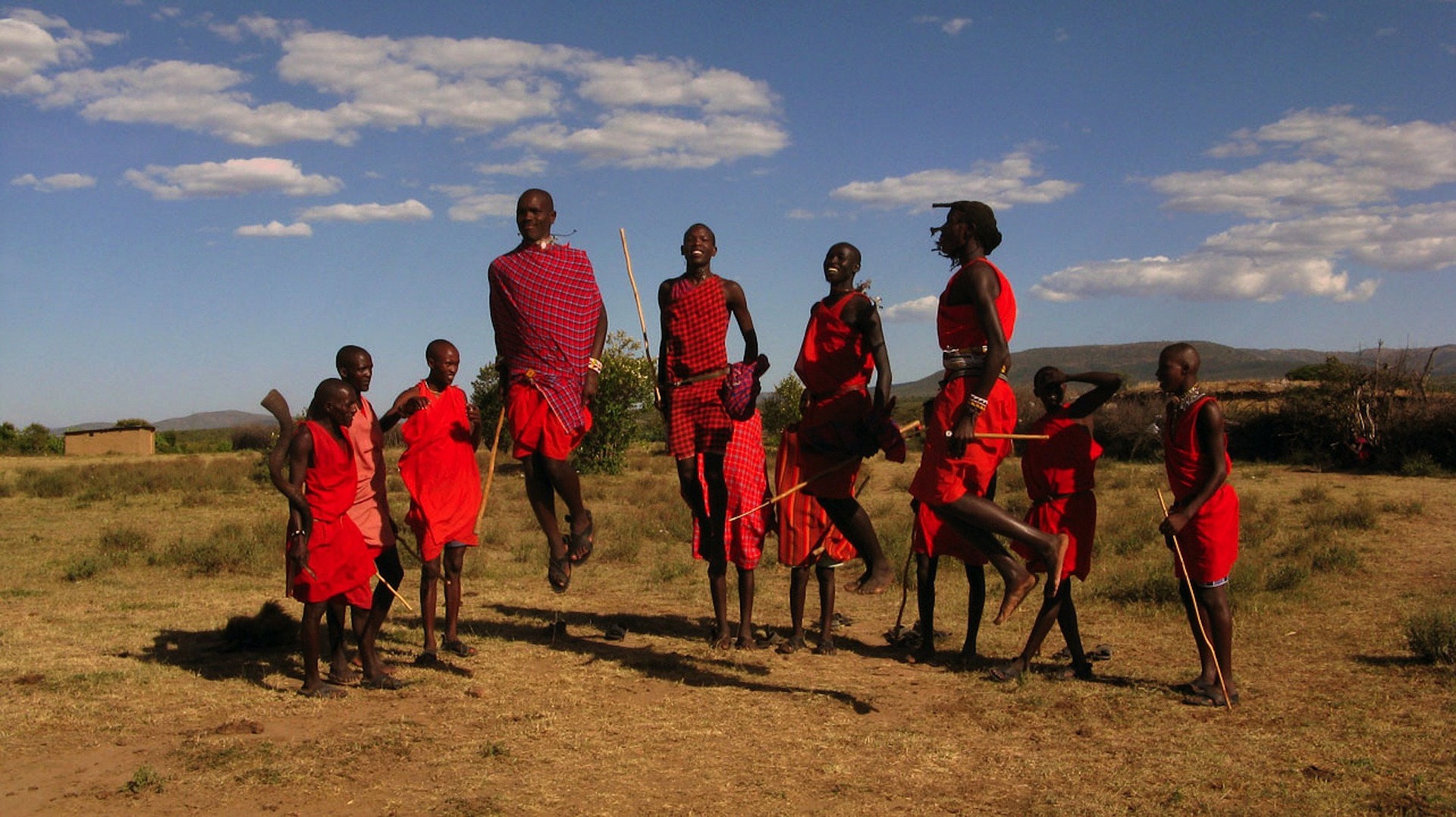
Maasai tribesmen
Serengeti: The Endless Plains
The Serengeti, which covers a much larger area, is equally famous for its indigenous Maasai people. It is known for its vast and endless savannah plains, acacia trees, and rocky kopjes. The Serengeti also has many predators, including lion, cheetah, hyena, and crocodile. You can explore the Serengeti on open vehicle safaris, on exciting walking adventures, and, in certain areas, on horseback rides. You can also camp under the stars, visit a local village, or take a scenic hot-air balloon ride over the park. The Serengeti is a place where you can experience the beauty and wonder of nature at its best. From January through March, you can visit the Southern Serengeti to witness the carefully choreographed birthing season of thousands of wildebeest calves. Always close by are numerous predators, creating a dramatic scene on the savannahs and providing unbelievable photo opportunities.
The Masai Mara and the Serengeti are two destinations that will make your African safari a memorable and rewarding adventure. You will see extraordinary wildlife and learn about the history, culture, and challenges of the people who live there. You will also contribute to the conservation and protection of these precious ecosystems. Whether you choose one or both of these regions, you will have an experience you will cherish forever.
Accommodation Options
Tented Camps: Safari Comfort and Nature
With some of the planet's most diverse and spectacular wildlife, the Masai Mara and Serengeti have various alternatives to suit your preferences and financial comfort zone, from comfortable and spacious tents to large luxurious family homes with private butler services, an on-site personal chef and a private safari vehicle. Tented camps come in different styles and sizes, from budget-friendly to high-end exclusive. All tents offer en suite bathrooms, hot showers, flush toilets and electricity. However, the higher-end destinations include WiFi, a spa and a gym.
The tented camp is undoubtedly the most popular and prolific type of accommodation. They allow you to enjoy the comfort and convenience of a hotel room while being close to nature and simultaneously hearing the sounds of the wilderness. Generally speaking, the Serengeti’s camps are more costly than those in the Masai Mara.
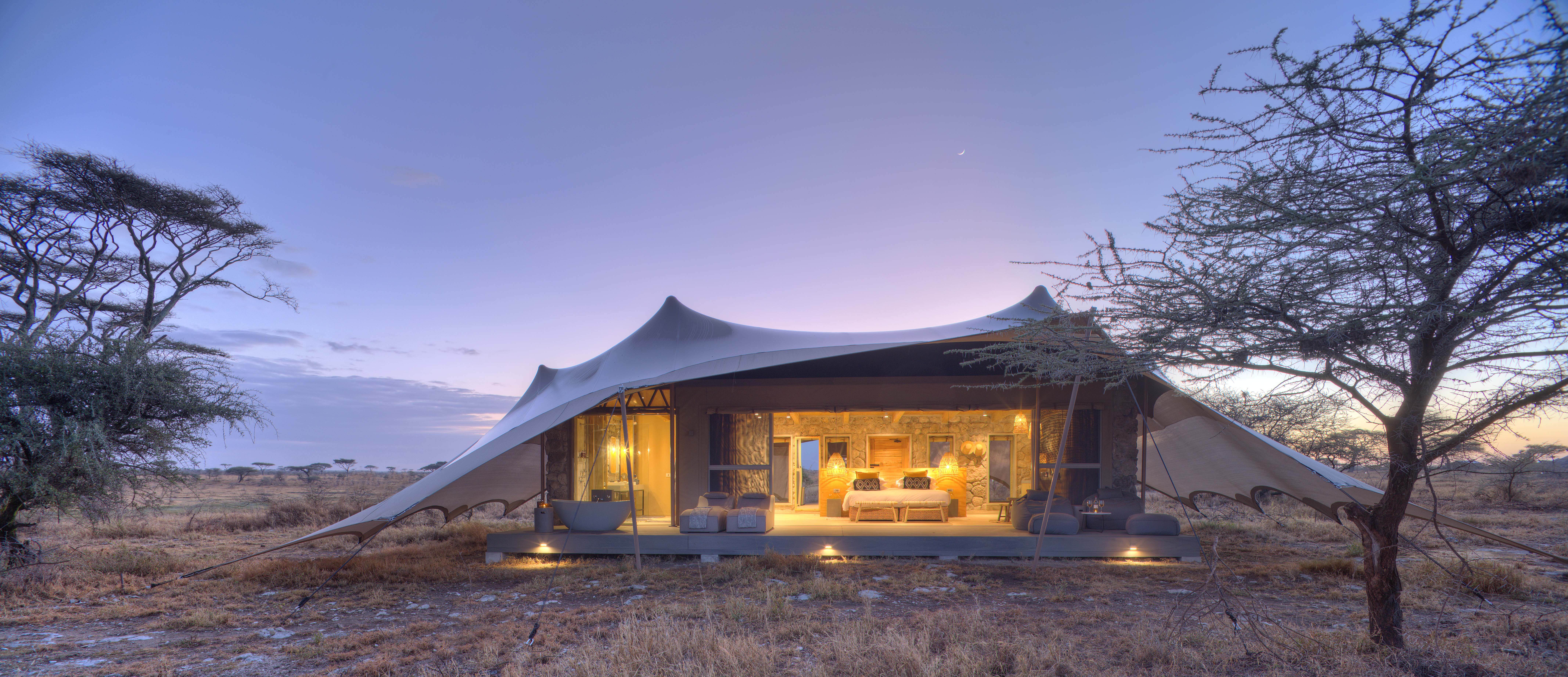
Tent exterior at Namiri Plains
Lodges: Safari Luxury and Privacy
Another hospitality style is staying in a lodge, usually a larger and more permanent structure offering additional facilities and services than a tented camp. Lodges are ideal for those who prefer more space and privacy and often have features such as swimming pools, spas, gyms, restaurants, and bars. Lodges can range from ultra-luxury to comfortable.
View our camps and lodges.
Cost Differences
Safari Adventures: Costs and Benefits
The cost of a luxury camp or lodge in the Masai Mara can vary depending on the season, location, amenities, and services offered. A joy and stress-relieving aspect of a safari is that they are fully-inclusive, covering all meals, local drinks and hot beverages, snacks and sundowner drinks in the bush. Twice-daily exciting safaris with an experienced guide, walking adventures and night safaris, where allowed, usually on the private concessions only, are included too. The various national parks and entrance fees from one region to another are also always included. So, you know what you have included upfront and what is not.
Accommodation Options for Your Safari
Since the Masai Mara and Serengeti offer a range of accommodation types, from super luxe with all the bells and whistles to more rustic, a wide price range is out there from which you can choose depending on the kind of experience you seek. Tented camps and lodges with spas and gyms will naturally be more expensive. The Masai Mara’s accommodation tends to be more affordable than the Serengeti's. However, the reserve fees may be higher in the Mara.
The Great Migration: Worth the Splurge
As with everything in life, if you want a once-in-a-lifetime experience, you inevitably need to pay more for it, and this applies to the seasonality of the great migration versus a regular fantastic wildlife safari in these two national Parks. Rates are higher during the peak migration seasons, typically from June and July through September into October. However, paying more for a jaw-dropping adventure such as the wildebeest and zebra migration spectacle is worth every additional penny spent!
Getting There
Safari adventures have been a way of life in this part of the world for so many decades that getting around is a well-tuned work of art. Transiting from one safari camp to another in the Masai Mara can be provided swiftly by road. Similarly, getting between the Masai Mara and Serengeti is possible by road or air.
Road transfers are arranged through two border crossings, but it is time-consuming and often a bumpy ride. The journey may require permits and overnight stays. Regional light aircraft transfer services are faster and provide added comfort but come at an increased cost. However, the additional expense discussion tends to win the day when you weigh how much time you spend on a regular road transfer. Flying to your next camp and returning quickly to safari and adventure mode is always the more popular outcome.
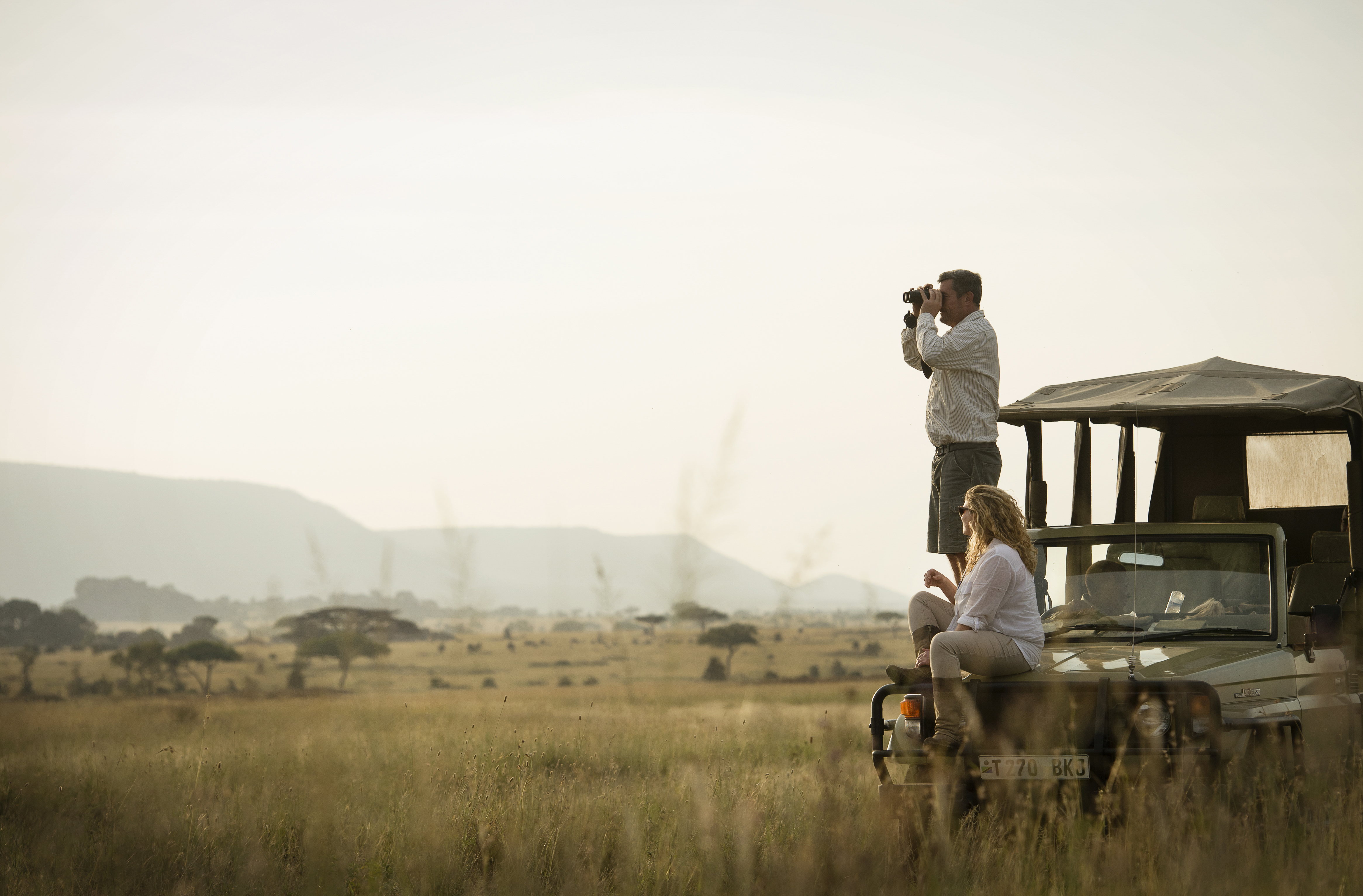
Game drive through the Serengeti
Different Traveller Types
From the outset, it must be stated that there is something for everyone to find and enjoy at all the tented camps and lodges in Kenya’s Masai Mara and the Serengeti in Tanzania. Whatever you seek, typically, your dreams will be made a reality with just a little advance notice and information.
Romance in Abundance
Romantic pursuits and a wildlife safari go hand-in-glove. We defy anyone not to discover romantic interludes in abundance when on a safari. So plan a getaway with your partner, where camps offer a unique experience of staying in luxury tents in the heart of the African wilderness, surrounded by nature's sounds, beauty and diversity. Your private tented accommodation offers sumptuous beds with soft linens, delightful en-suite bathrooms with hot running water, flushing toilets, showers with views overlooking the grazing animals, and stylish furnishings. Some even come with a romantic tub with endless views of the savannahs and grasslands. You can also indulge in romantic activities such as candlelit dinners, sunset cocktails accompanied by the camp’s famous nibbles, couples massages, and exhilarating hot-air balloon safaris over the sweeping savannahs. You can witness the region's spectacular wildlife, such as the great migration of wildebeest and zebra, the Big 5 animals, a wide variety of antelope species and colourful birds. You will also learn about the rich culture and history of the local communities, such as the Maasai and the Hadzabe. The entire experience oozes romance from start to finish.
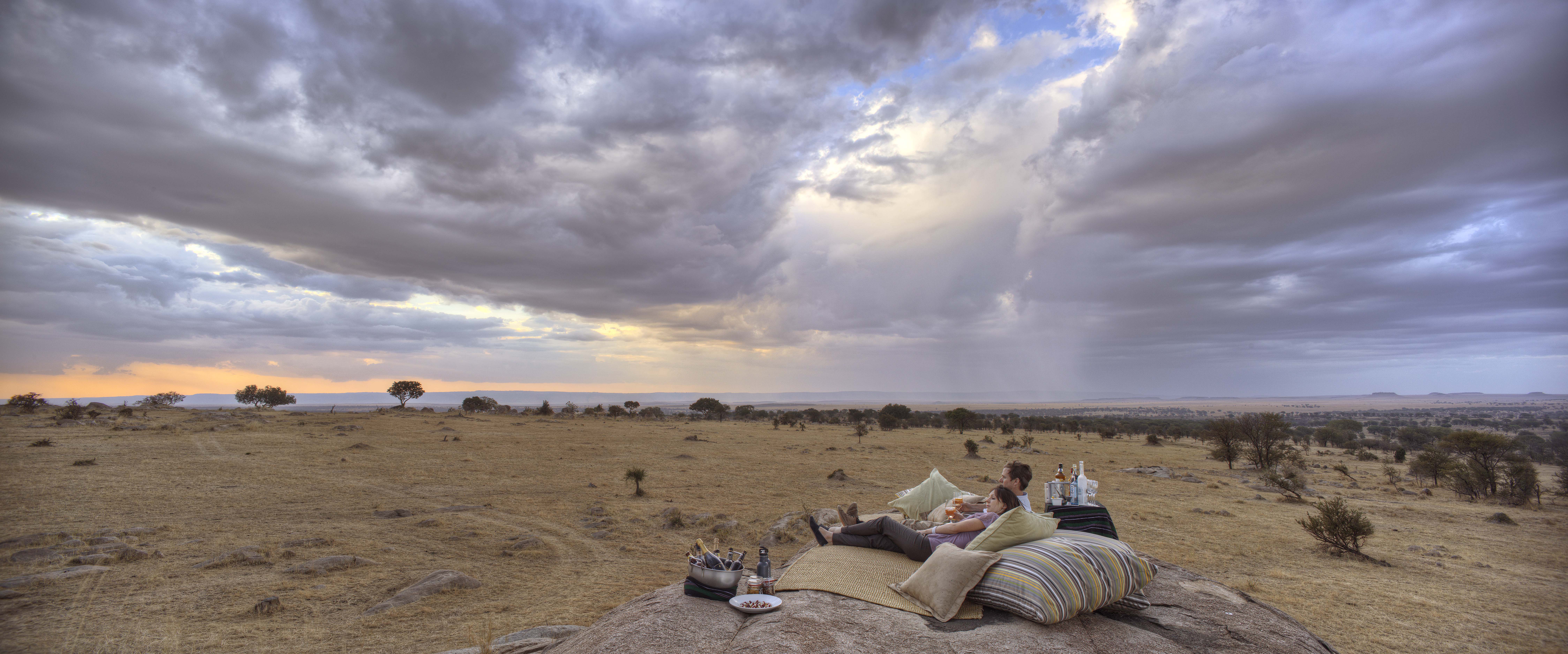
Romantic moments on safari
Family-style Fun and Comfort
If you are travelling with your family, you can also find sensational tented camps or lodges that cater to your family dynamics, needs and preferences. These camps offer spacious and comfortable inter-leading tents with living spaces in between, perfect for four families. For larger family groups, the camps reserve the nearest additional tent next door; they also provide family-friendly facilities like swimming pools and organise fun and educational activities for children, such as wildlife animal tracking safaris and nature walks with specialist guides, arts and crafts, and cultural visits. However, at the top of the range, some lodges provide luxurious homes comprising two and three bedrooms, living and dining spaces, a swimming pool, an on-site chef and a butler to care for the family’s every need. This experience also comes with a private safari vehicle and guide. If this sounds ideal, check out our Asilia Retreats. This family-style setting allows you to design your preferred safari itinerary schedule.
Wildlife Photo Safaris at Their Best
If you are passionate about photography, tented camps offer specialised services such as professional guides who love photography. There’s also equipment to help you capture the best shots of the wildlife and scenery. They offer specially designed and adapted safari vehicles and flexible and customised itineraries so you can choose the times and durations of your photo sessions.
The Masai Mara and Serengeti camps offer unforgettable experiences for different types of travellers. Whether you are looking for romance, family fun, or photography, you can find a tented camp or a safari lodge that suits your style and budget.
Our team are waiting to help you plan your dream safari. Simply enquire now to begin the adventure of a lifetime.
More Destinations Articles

What’s the difference? National Parks, Game Reserves, and Conservancies in East Africa
02 February 2020To most of us, a national park, game reserve, or conservancy are all the same...

7 Of Our Favourite Things About Lake Manyara National Park
04 December 2019Lake Manyara National Park is located in Tanzania's Arusha and Manyara region...

Naboisho: Home To The Mara’s Newest Pool
28 November 2019Naboisho is now home to the Mara Naboisho Conservancy’s newest pool. During t...

Guest Gallery: The Serengeti At Its Best
27 November 2019We recently had the pleasure of welcoming guests, Chris and Monique Fallows t...





